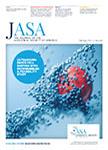版权所有:内蒙古大学图书馆 技术提供:维普资讯• 智图
内蒙古自治区呼和浩特市赛罕区大学西街235号 邮编: 010021

作者机构:Centre for Interdisciplinary Research in Music Media & Technology (CIRMMT) ‐ Schulich School of Music ‐ McGill Univ. 555 Sherbrooke Street West Montreal QC H3A1E3 Canada bruno.giordano@music.mcgill.ca Centre for Interdisciplinary Research in Music Media & Technology (CIRMMT) ‐ Schulich School of Music ‐ McGill Univ. 555 Sherbrooke Street West Montreal QC H3A1E3 Canada smc@music.mcgill.ca Centre for Interdisciplinary Research in Music Media & Technology (CIRMMT) ‐ Schulich School of Music ‐ McGill Univ. 555 Sherbrooke Street West Montreal QC H3A1E3 Canada yon@cim.mcgill.ca Centre for Intelligent Machines ‐ CIRMMT ‐ Dept. of Electrical and Computer Engineering ‐ McGill Univ. 3480 University Street Montreal QC H3A 2A7 Canada jer@cim.mcgill.ca Centre for Intelligent Machines ‐ McGill Univ. 3480 University Street Montreal QC H3A 2A7 Canada hyyao@cim.mcgill.ca Centre for Intelligent Machines ‐ McGill Univ. 3480 University Street Montreal QC H3A 2A7 Canada hayward@cim.mcgill.ca
出 版 物:《The Journal of the Acoustical Society of America》
年 卷 期:2008年第123卷第5_SUPPLEMENT期
页 面:3412-3412页
学科分类:07[理学] 082403[工学-水声工程] 08[工学] 070206[理学-声学] 0824[工学-船舶与海洋工程] 0702[理学-物理学]
摘 要:We investigated the role of haptic, proprioceptive and auditory information in the non‐visual identification of walking grounds. We selected four solid materials (e.g., marble) and four aggregate materials (e.g., fine gravel). Five observers identified the materials in each of four experimental conditions: multisensory, haptic, proprioceptive, and auditory. In the auditory condition, they were presented with walking sounds they produced. In the other conditions, observers walked blindfolded on the materials. In the haptic and proprioceptive conditions auditory information was masked. In the proprioceptive condition haptic information was masked. No masking took place in the multisensory condition. In all conditions, solids and aggregates were seldom confused, and aggregates were better identified than solids. Chance identification performance was observed only for solids in the presence of simultaneous haptic and auditory masking, suggesting a secondary role of proprioceptive information. In the proprioceptive condition, identification of aggregates was better than chance, suggesting a significant role of proprioception. Identification of aggregates was at its best in the haptic condition, and not in the multisensory condition, suggesting either an inconsistency of information between auditory and non‐auditory channels, or conflicting cognitive strategies for the exploitation of these sources of information in multisensory contexts.